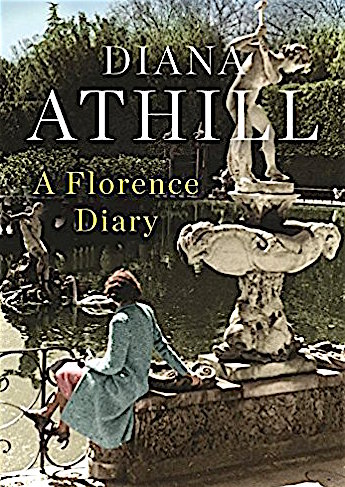Diana Athill, A Florence Diary. Granta, 2016.
Reviewed by Charles Freeman

This is an amuse-bouche of a book, just 40 pages from a notebook recording the author’s visit to Florence in the late summer of 1947. By sheer coincidence I found myself reading it on Diana Athill’s hundredth birthday, December 21st, 2017. Her lively introduction shows that her mind remains undiminished from 70 years ago.
Athill set off for Florence from Victoria Station with her cousin Pen. While Athill is well organised, her cases registered all the way through and her hand luggage consisting mainly of a hatbox and a shopping bag of food, her cousin comes loaded with many small items tied together with string, a straw hat and an easel that falls apart and gets in the way of everybody. Yet they are clearly a cheerful and attractive pair and well looked after on the journey south. Athill is cossetted by an Italian prince by the name of Alfonso, who even arranges flowers to be delivered to their pensione in Florence while he sweeps on to Rome, imploring the travellers to come after him.
Italy at the time was just recovering from the war and the bathwater was cold due to the lack of electricity. English visitors were gladly welcomed but had very little money. Athill and Pen had been given a tip over where to find the best rates of exchange and they survived happily, first in the Hotel Bonciani, and then in their pensione. After paying for their full board they have enough left over for patisserie and entrance fees. It is the patisserie that delights them: a wonderful array of exotic items that must have been a godsend after the dour food of a still-rationed England. Pen has come in uncomfortable shoes and sees some lovely sandals that she looks at every day, unable to decide whether to buy them (they enjoy yet more patisserie instead). Optimistically they decide that they will one day buy a villa in Fiesole. (This hope is frustrated, not least, Athill’s introduction tells us, because Pen went on to become a nun.)
Athill is more studious than Pen and makes sure she has visited everything in the guidebook. Pen has fewer inhibitions, even getting herself shown round Bernard Berenson’s villa, I Tatti, but missing out on the sumptuous Medici Chapel because she did not explore far enough into San Lorenzo. Athill’s response to art is intuitive and immediate. She delights in coming across a new treasure, a ‘dreamlike’ Botticelli or the light on the walls of Santa Croce that makes them ‘glow like ripe peaches’. She has an exuberance that falls just short of gushiness: the amphitheatre in the Boboli Gardens is ‘too lush and Renaissance for words’ and ‘the courtyard [of the Bargello], with a colonnade all round and a gallery on the first floor with great stairs coming down, is the most beautiful thing I have ever seen’. Images of the works of the great Florentine masters flit by.
This is a book to be read not so much for what it tells you about Florence but for the way it describes a society restoring itself after the trauma of a lost war. Athill’s are the reactions of a sensitive outsider to the city’s atmosphere and charms. There is a selection of contemporary photographs and an introduction in which Athill meditates from her great age on the power of place in her life. Short though this memoir is, I found much to enjoy.
Charles Freeman is Historical Consultant to the Blue Guides. He has written the historical introduction to the Florence volume.






